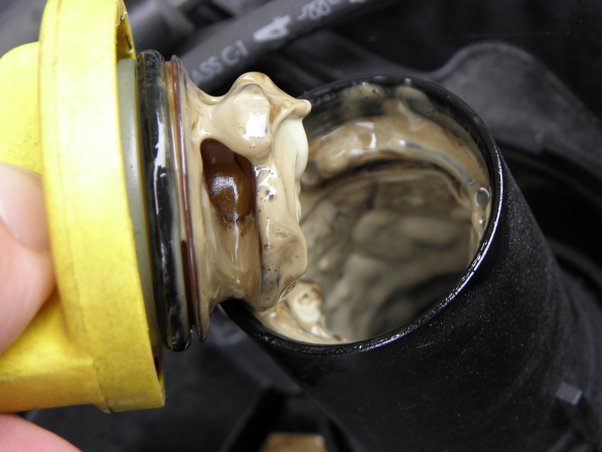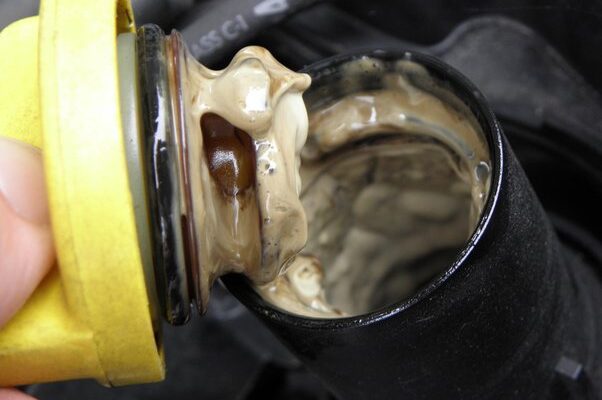
Water in lubricating oil has been a point of keen debate for as long as oil analysis has been used to monitor lubricant and equipment condition. Water is one of the most destructive contaminants in most lubricants. It induces base oil oxidation, attacks additives, and interferes with oil film strength. Low levels of water contamination are not abnormal in lubricating oil, but higher levels of water ingression merit attention and the source needs to be investigated.
All lubrication systems are susceptible to water contamination. Water can enter the oil through any opening – a crack or puncture, a poorly fitting filler cap, a loose inspection lid, an uncapped filling point, a busted seal or an open or damaged vent. Condensation is another common way for water to get into the oil – lubricating systems subjected to high temperature variations in particular. Equipment and machinery that are in direct sunlight are especially vulnerable to condensation when cooling down during the night. In addition, engine oil is disposed to water intrusion due to frequent cold starts and coolant leaking into the oil. Last but not least, water can be added to the oil by accident or human error.
Following is a brief discussion of the harmful effects that water contamination has on lubricants:
Foaming:
Water is often a cause of foaming and air entrainment in lubricating oil. Foam is a collection of small bubbles of air that accumulate on or near the surface of the oil. In severe cases, the foam can leak out of the machine through breathers and dipsticks. Foam is an efficient thermal insulator, hence the temperature of the oil can become difficult to control. The presence of air bubbles in the fluid can also lead to excessive oxidation, cavitation and impaired lubricating properties.
Rust and Oxidation:
The presence of water in a lubricating oil can cause the progress of oxidation to increase tenfold. This may result in premature aging of the oil, particularly in the presence of catalytic metals, such as copper, lead and tin. It also induces rust and corrosion when in contact with iron and steel surfaces for extended periods of time. Rust can cause abrasive wear when a hard, rough surface slides across a softer one. Once an oil starts to oxidize, you may also see an increase in the acid number of the oil as discussed below.
Lubricant Degradation:
Water not only accelerates oxidation of metal surfaces, but also of the oil itself by depleting oxidation inhibitors within the lubricant. When oxidation occurs, acid formation can follow soon after. There is also the obvious change in viscosity. Add water to any other fluid, and the viscosity will decrease when hydrolysed. Hydrolysis is a chemical reaction where water breaks down the chemical bonds that exist within the oil. Conversely, if the water is emulsified into the oil, it can produce sludge, which will increase the viscosity. The ability of a lubricant to resist chemical decomposition in the presence of water is known as the hydrolytic stability of the oil. A lubricant will perform better in wet/humid environments when it has good hydrolytic stability.
Decreased Load Carrying Capacity:
The film strength of oil becomes impaired in the presence of water, Proper lubrication is dependent on the formation of a hydrodynamic oil film (see OilChat 22) to separate opposing friction surfaces. When pressure is applied to an oil film, the viscosity of the oil will increase proportionally to maintain protection. Water does not exhibit this tendency and will cause boundary lubrication where full fluid film/hydrodynamic lubrication would otherwise be present.
In journal bearings the presence of water can result in a loss of the hydrodynamic oil film strength that leads to increased wear. As little as one percent water in oil can reduce the life expectancy of a journal bearing by as much as 90 percent. For rolling element bearings, the situation is even worse. In addition to reduced oil film strength, the extreme pressures and temperatures generated in the load zone area of rolling element bearings can result in instantaneous flash-vaporization of the water. This promotes erosive wear.
Cavitation:
The phenomenon of cavitation is the formation and collapse of cavities (bubbles) in a liquid. Vaporous cavitation occurs when water vapor bubbles are formed in the low-pressure section of lubricating systems, e.g. on the suction side of the oil pump. When these bubbles travel to high pressure zones in the system they implode and condense back to the liquid phase. The collapse of the vapor bubbles can generate great forces and cause surface fatigue/erosion at the point of collapse. Read more about cavitation in OilChat 74.
Hydrogen Embrittlement:
Embrittlement is the loss of the ductility of a material, thus making it brittle. An embrittled product fails by fracture without deforming. Hydrogen embrittlement occurs when water in the oil finds its way into the microscopic cracks in the metal surfaces of components. When water is exposed to excessive pressure, it decomposes into its components (hydrogen and oxygen) and the hydrogen is released. This can force the microscopic cracks to open wider, and thus make them larger and more susceptible to fracture.
Water is a major cause of lubricant breakdown, poor machine reliability and component failure. Like all contaminants, it is important to take steps to control or eliminate the source of water ingression. To control moisture levels, one must be able to detect its presence. The crackle test is a simple test to identify the presence of free and emulsified water in oil. The crackle test was discussed at length in OilChat 73.
If you have any questions regarding this newsletter or any other lubrication related issues simply email us at info@bcl.co.za. Our lubricant experts will be happy to answer any questions you may have.

